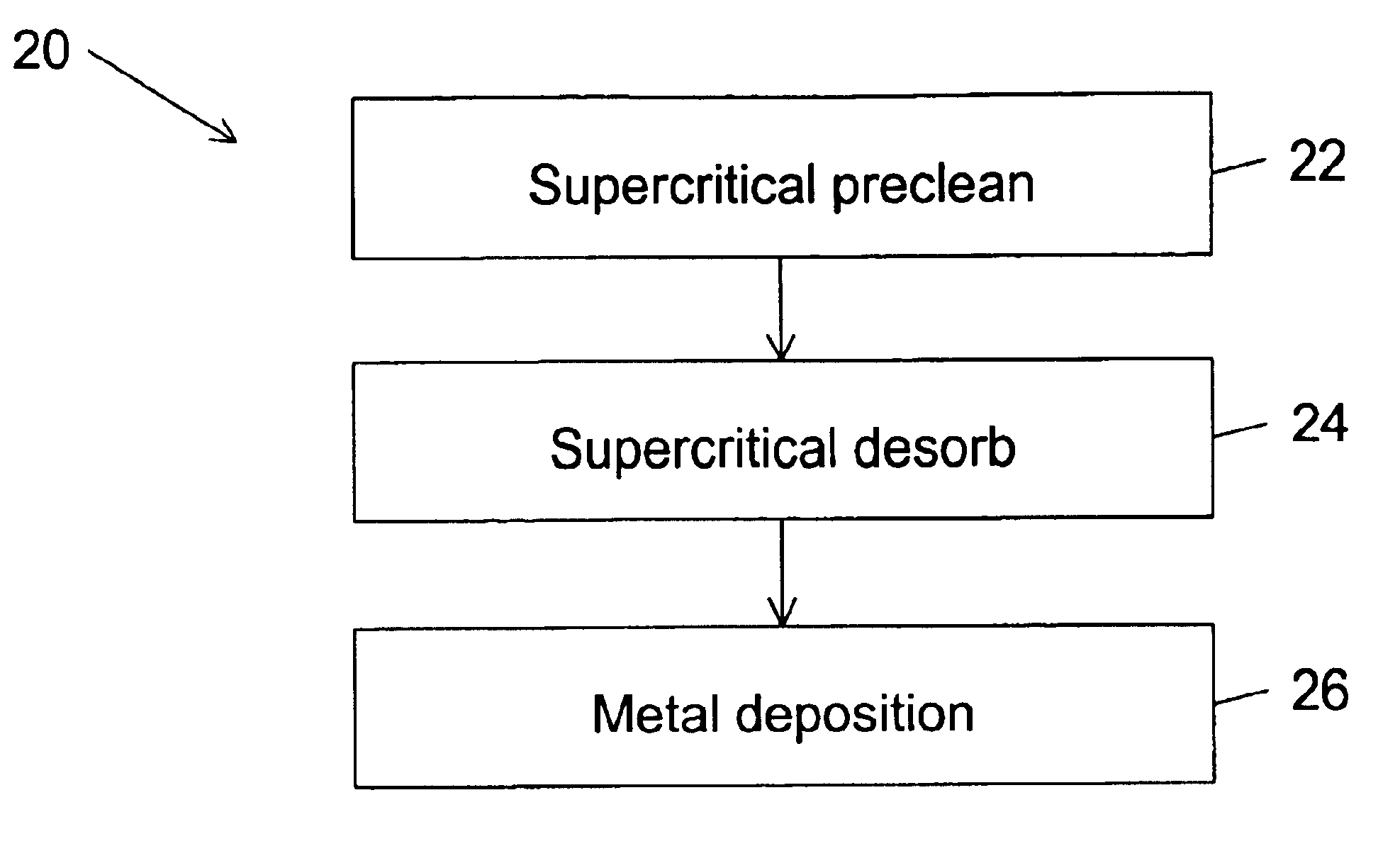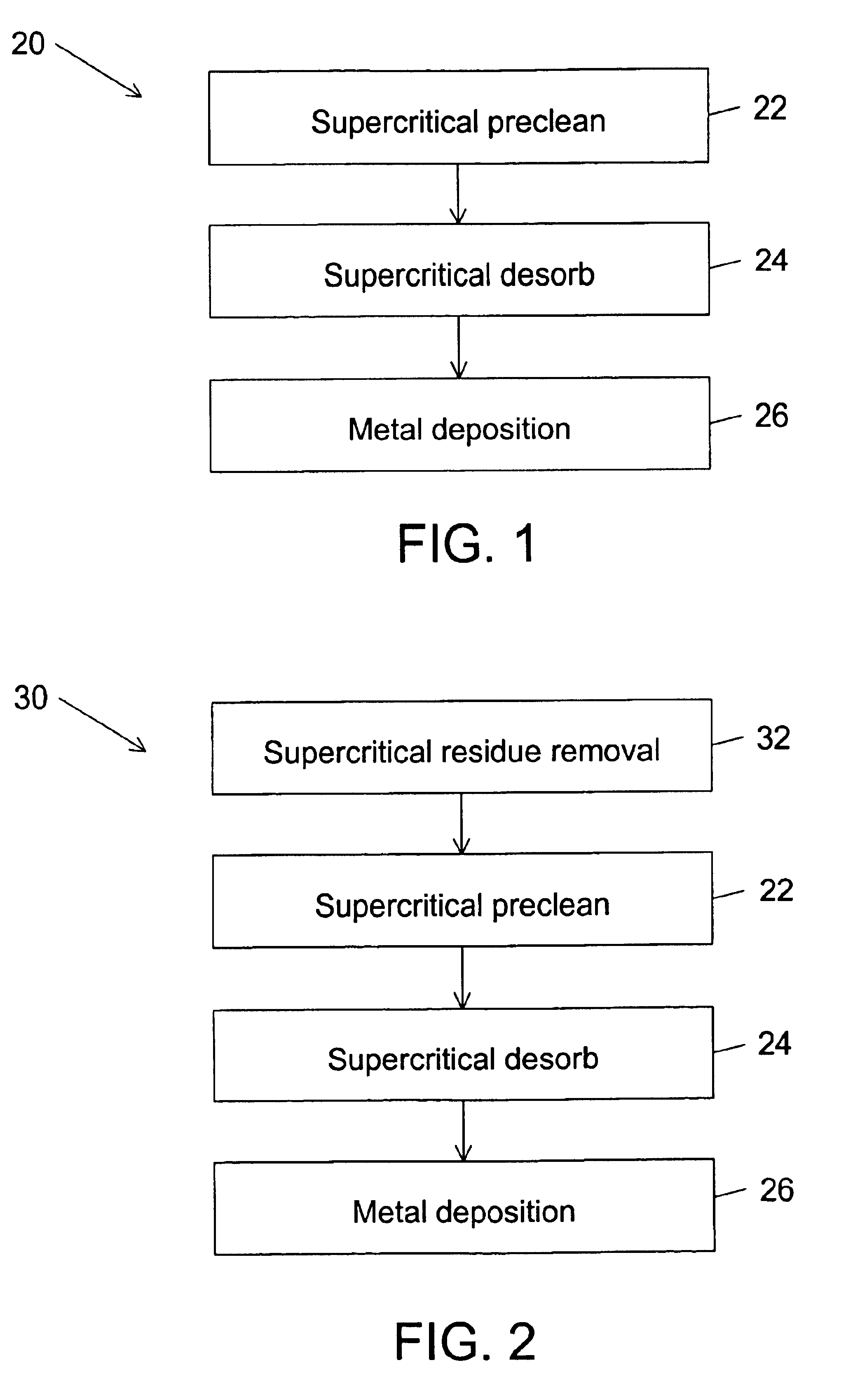Method of depositing metal film and metal deposition cluster tool including supercritical drying/cleaning module
a metal film and metal deposition technology, applied in the field of metal film deposition, can solve the problems of temperature-induced damage of the substrate, especially detrimental corner clipping, plasma damage of the surface of the substrate,
- Summary
- Abstract
- Description
- Claims
- Application Information
AI Technical Summary
Benefits of technology
Problems solved by technology
Method used
Image
Examples
Embodiment Construction
[0025]The preferred method of the present invention is schematically illustrated in FIG. 1. The preferred method 20 deposits a metal film on a substrate. Preferably, the substrate is a semiconductor substrate having via holes through a dielectric material to an underlying metal layer. When the metal film is deposited on the semiconductor substrate, the metal film contacts the underlying metal layer at the via holes. More preferably, the semiconductor substrate includes via holes and trenches in a dual damascene structure. In the dual damascene structure, the metal layer also contacts the underlying metal layer at the via holes. Alternatively, the metal film is deposited on an alternative substrate where the metal film contacts an exposed metal surface on the alternative substrate.
[0026]The preferred method 20 comprises a supercritical preclean step 22, a supercritical desorb step 24, and a metal deposition step 26. In the supercritical preclean step 22, the substrate is maintained i...
PUM
| Property | Measurement | Unit |
|---|---|---|
| temperatures | aaaaa | aaaaa |
| temperatures | aaaaa | aaaaa |
| temperature | aaaaa | aaaaa |
Abstract
Description
Claims
Application Information
 Login to View More
Login to View More - R&D
- Intellectual Property
- Life Sciences
- Materials
- Tech Scout
- Unparalleled Data Quality
- Higher Quality Content
- 60% Fewer Hallucinations
Browse by: Latest US Patents, China's latest patents, Technical Efficacy Thesaurus, Application Domain, Technology Topic, Popular Technical Reports.
© 2025 PatSnap. All rights reserved.Legal|Privacy policy|Modern Slavery Act Transparency Statement|Sitemap|About US| Contact US: help@patsnap.com



